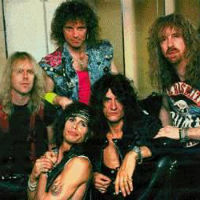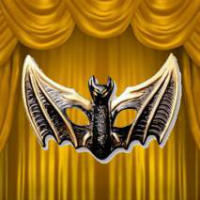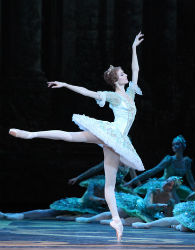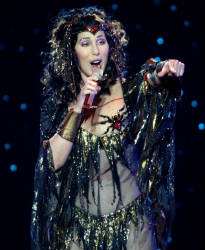Opera “Nose”, D. Shostakovich
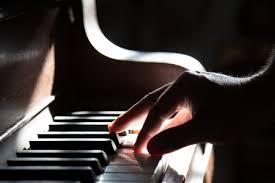 “Nose” is the first opera of Dmitry Shostakovich, written in 1927-1928 on the story of the same name by Nikolai Gogol. According to the composer himself, he chose the story “Nose” because it made it possible to create satire for the era of Nicholas I. “Music in this performance does not play a self-sufficient role,” Shostakovich wrote. – Here is the emphasis on the presentation of the text. I will add that the music does not wear deliberately parody coloring. No! Despite all the comedy on the stage, the music is not comic. I think this is correct, since Gogol sets out all comic incidents in a serious tone. This is the strength and dignity of Gogol’s humor. He is not sharp. Music also tries not to poke fun. ”
“Nose” is the first opera of Dmitry Shostakovich, written in 1927-1928 on the story of the same name by Nikolai Gogol. According to the composer himself, he chose the story “Nose” because it made it possible to create satire for the era of Nicholas I. “Music in this performance does not play a self-sufficient role,” Shostakovich wrote. – Here is the emphasis on the presentation of the text. I will add that the music does not wear deliberately parody coloring. No! Despite all the comedy on the stage, the music is not comic. I think this is correct, since Gogol sets out all comic incidents in a serious tone. This is the strength and dignity of Gogol’s humor. He is not sharp. Music also tries not to poke fun. ”
The premiere of the opera Nose took place on January 18, 1930 at the Maly Opera House. Having received many unfriendly reviews from critics, the work was shown sixteen times during the year, and then removed from the repertoire. After the publication of the score “Nose” in 1962 in Vienna, opera began to be staged in various foreign theaters. Only in 1974, the opera Nose was again staged in the USSR, on the stage of the Moscow Chamber Musical Theater under the direction of Gennady Rozhdestvensky. Then, after a 30-year hiatus, the opera was staged at the Mariinsky Theater. On the stage of foreign theaters, the work of Dmitry Shostakovich continues to enjoy continued success.
The plot of the opera “Nose”
The first picture. The barber of Ivan Yakovlevich. Ivan Yakovlevich woke up and had breakfast. Suddenly, in the bread, he discovers a nose. Praskovya Osipovna scandal. Suddenly it becomes dark, the ghost of the quarterly warden is visible in the dark, then it becomes light again. Praskovya Osipovna insists that Ivan Yakovlevich immediately blow his nose out of the house.
The second picture. The embankment. Ivan Yakovlevich tries to throw his nose, but constantly meets acquaintances. Finally, he manages to throw his nose into the river, but then the quarterman approaches and begins to ask what he just did. It’s getting dark.
The third picture. Kovalev’s bedroom. Plato Kuzmich wakes up and discovers a missing nose. He dresses and sets off in search of.
The fourth picture. Kazan Cathedral. The nose in the uniform of a state councilor prays fervently. Kovalev approaches and tries to reason with Nose, but Nose denies his connection with Kovalev. While the lady distracts Kovaleva, Nose quietly leaves. Recollecting himself, Kovalev becomes furious.
The second action.
Introduction. Kovalev on a cab drive at the gates of the police chief. The gatekeeper reports that the police chief has just left. Kovalev orders to take him on a newspaper expedition.
The fifth picture. Newspaper expedition. Kovalev wants to file an advertisement for the missing Nose, but the official does not believe him. Then Kovalev shows his face. The official advises to describe this incident in the “Northern Bee” and offers Kovalev sniff tobacco. In a rage, Kovalev runs away. Janitors submit announcements.
Picture six. Kovalev’s apartment. The lackey Kovaleva sings to the balalaika. Kovalev comes, scolds the footman and utters a sad monologue.
The third action.
Picture Seven. Outskirts of St. Petersburg. On stage is an empty stagecoach. The quarterly distributes ten cops in an ambush. Stagecoach gradually filled with passengers. The appearance of a pretty merchant with bagels distracts the police, they take her offstage, while the quarterly one falls asleep. When the stagecoach moves off, the Nose runs out to meet him. The coachman shoots at the Nose, but misses. Passengers jump out of the stagecoach. An old lady runs after the Nose. Running away from her, the Nose stumbles over the quarterly, he wakes up and whistles, the police come to whistle. Passengers and cops catch Nose together. The nose shoots back. Everyone surrounds the Nose and beat it, from beating it takes its former form. The quarterly wraps his nose in a piece of paper and leaves the stage with the police.
Picture Eight. Apartments Kovalev and Podtochina. Quarterly returns Kovalev’s nose. Kovalev in gratitude gives him money. But soon his joy is darkened: his nose does not stick to his face. Ivan runs after the doctor. The doctor examines Kovalev, declares that he can not help with anything and leaves. Comes Yaryzhkin. Kovalev confesses to him that he blames the headquarters officer Podtochina for everything. Yaryzhkin advises her to write an indictment. Podtochina receives a letter and reads it with her daughter. Kovalev receives her answer and reads it together with Yaryzhkin. From the answer, he concludes that Podtochina is not to blame.
Epilogue
Picture Ninth. Kovalev’s apartment. Having woken up, Kovalev happily catches his nose in its place. He dances in ecstasy. Ivan Yakovlevich comes and shaves Kovalev.
Act Two Kovalev walks along Nevsky Prospekt, exchanging pleasantries with friends. By their reaction, he is increasingly convinced that the nose is really in place. Among others, during a walk, he meets the Podtochins. Saying goodbye to them, he invites a pretty little shirt front merchant to visit him.
